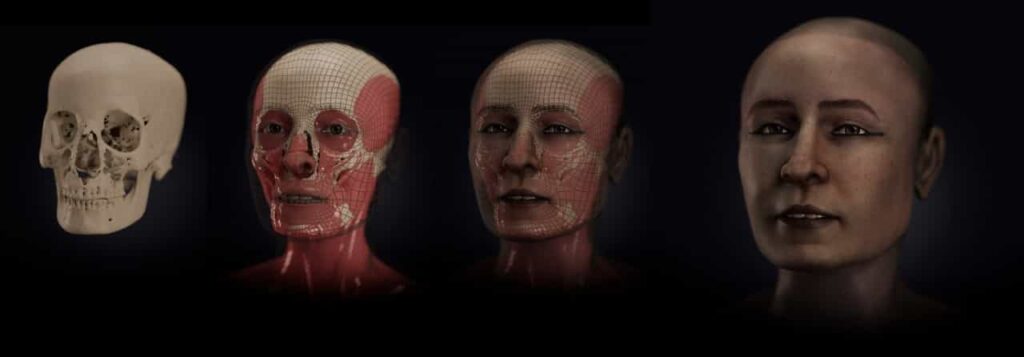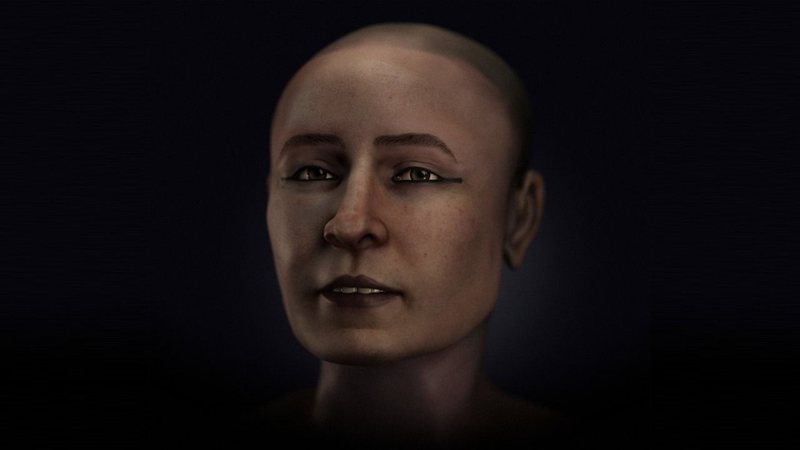The mummy known as Shep-en-Isis, or Schepenese, has become a real attraction since its removal from Egypt and arrival in Switzerland in 1820.
One of the first Egyptian artifacts to arrive in the country, the mummified body became a spectacle for the public, and an object of study for researchers.
Well-preserved and with an elegant set of coffins, it didn’t take long for the embalmed woman to become Switzerland’s most popular mummy, and to “appear not only in specialized literature, but also in a novel,” Michael Habicht, an Egyptology expert at Flinders University, Australia, explains.
Projects such as those from the FAPAB research center in Avola, Italy, allow us to determine important information about the mummy’s life, such as her age, ancestry, and more recently, what her face would have looked like.
Switzerland’s most famous mummy
Studies carried out on the mummy since her arrival in Switzerland in 1820, reveal that she lived during the 7th century BC, with Habicht pointing out that “Based on Shep-en-Isis’ anatomical age and the style of her inner coffin, she must have been born by around 650 BC and died between 620 and 610 BC.”
Through the inscriptions described on her sarcophagi, it is also possible to determine the ancestry of the woman, who was born both to a long line of priests of Amun in Thebes, and to a wealthy upper-class family. Due to this, she would also have had some degree of formal education.
Researchers point out, however, that despite the intensive investigations carried out over the past few decades, it has not been possible to identify the name or profession of Shep-en-Isis’s alleged husband, nor whether she had children.
In 1891, ancient Egyptian coffins were discovered and removed from the southern part of the mortuary temple of Hatshepsut, located in Deir el-Bahari on the West Bank of the Nile River.
Located there was her family’s grave, which had presumably been created by her father, Pa-es-tjenfi, whose mummy is guarded in Berlin.
Facing the historical figure
In addition to historical documents and research data that shed light on the mummy, a team of researchers started a facial reconstruction project using information obtained through a CT scan performed on the mummy’s skeleton, which was stored in the São Galo Abbey Library in Switzerland.
Cícero Moraes, a 3D designer who gained recognition in the area after developing a series of facial reconstructions of historical figures, participated in the project and placed a face to the mummy. Moraes notes that the most striking feature revealed by the reconstruction is the protrusion of the mummy’s teeth, a deformity known as a class II maxillary prognathism.
The research also focused “exclusively on reconstructed forensic appearance and anatomical evidence,” and chose not to add any accessories to the mummy’s facial reconstruction, such as jewelry, clothing, or wigs, which is often seen in similar projects.
“Facial reconstruction follows statistical and anatomical data to be performed, so that today we know that structural compatibility, that is, the volume of the face is very compatible with the individual in life, maintaining the general shape of the face, nose and cheeks. lips”, explains a specialist in forensic facial reconstruction.
Source: ISABELA BARREIROS, Aventuras na História








